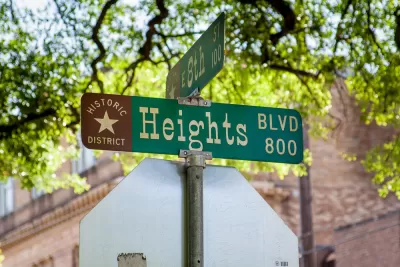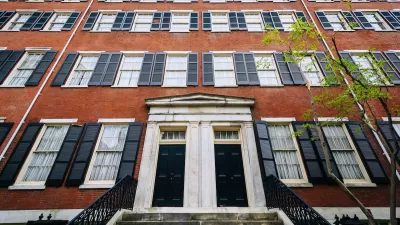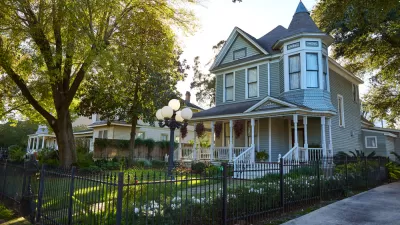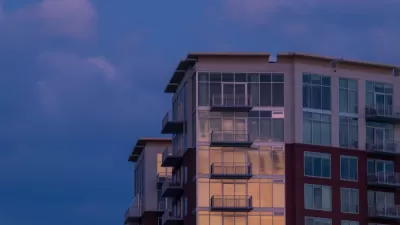The proposed model could be a new tool for preserving historic neighborhoods with more flexibility and with a focus on reducing displacement and addressing community concerns.

A new proposal to create “conservation districts” in Houston, where use-based zoning is subject to voter approval, could give property owners more flexibility in preserving historic buildings. Mike Snyder, writing in Urban Edge, describes the proposed designation.
According to Roman McAllen, the city’s historic preservation officer, existing historic districts “are located mostly in higher-income neighborhoods as a way of maintaining the status quo. We needed something that was more geared toward keeping at bay what neighbors might see as most egregious to their neighborhoods.”
The proposed conservation districts “could regulate a variety of elements including minimum lot size; lot width and depth; front, side and rear setbacks; building height; and architectural style.” As Snyder notes, “The recommendation also would make it possible to create a conservation district with a lower level of property owner support than the 67% required for a protected historic district,” making it easier to protect important landmarks on a case-by-case basis.
Pointing to an example from Houston’s Freedmen’s Town district, where structures and roads built by freed Black Americans in the 1800s still stand, McAllen says the proposed conservation district model “could protect many of the remaining structures from demolition while enabling appropriate infill development on vacant lots scattered throughout the neighborhood.”
FULL STORY: With conservation districts, Houston could have a new path to preserve neighborhoods

Study: Maui’s Plan to Convert Vacation Rentals to Long-Term Housing Could Cause Nearly $1 Billion Economic Loss
The plan would reduce visitor accommodation by 25,% resulting in 1,900 jobs lost.

North Texas Transit Leaders Tout Benefits of TOD for Growing Region
At a summit focused on transit-oriented development, policymakers discussed how North Texas’ expanded light rail system can serve as a tool for economic growth.

Using Old Oil and Gas Wells for Green Energy Storage
Penn State researchers have found that repurposing abandoned oil and gas wells for geothermal-assisted compressed-air energy storage can boost efficiency, reduce environmental risks, and support clean energy and job transitions.

Private Donations Propel Early Restoration of Palisades Playground
Los Angeles has secured over $1.3 million in private funding to restore the Pacific Palisades playground months ahead of schedule, creating a modern, accessible space that supports community healing after recent wildfires.

From Blight to Benefit: Early Results From California’s Equitable Cleanup Program
The Equitable Community Revitalization Grant (ECRG) program is reshaping brownfield redevelopment by prioritizing projects in low-income and environmental justice communities, emphasizing equity, transparency, and community benefits.

Planting Relief: Tackling Las Vegas Heat One Tree at a Time
Nevada Plants, a Las Vegas-based nonprofit, is combating the city’s extreme urban heat by giving away trees to residents in underserved neighborhoods, promoting shade, sustainability, and community health.
Urban Design for Planners 1: Software Tools
This six-course series explores essential urban design concepts using open source software and equips planners with the tools they need to participate fully in the urban design process.
Planning for Universal Design
Learn the tools for implementing Universal Design in planning regulations.
Ascent Environmental
Borough of Carlisle
Institute for Housing and Urban Development Studies (IHS)
City of Grandview
Harvard GSD Executive Education
Toledo-Lucas County Plan Commissions
Salt Lake City
NYU Wagner Graduate School of Public Service





























